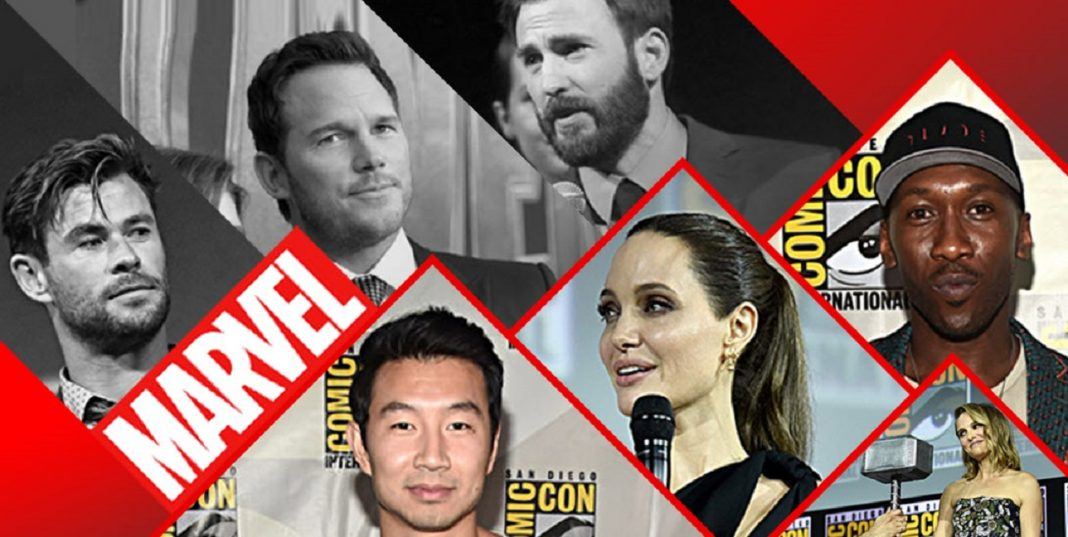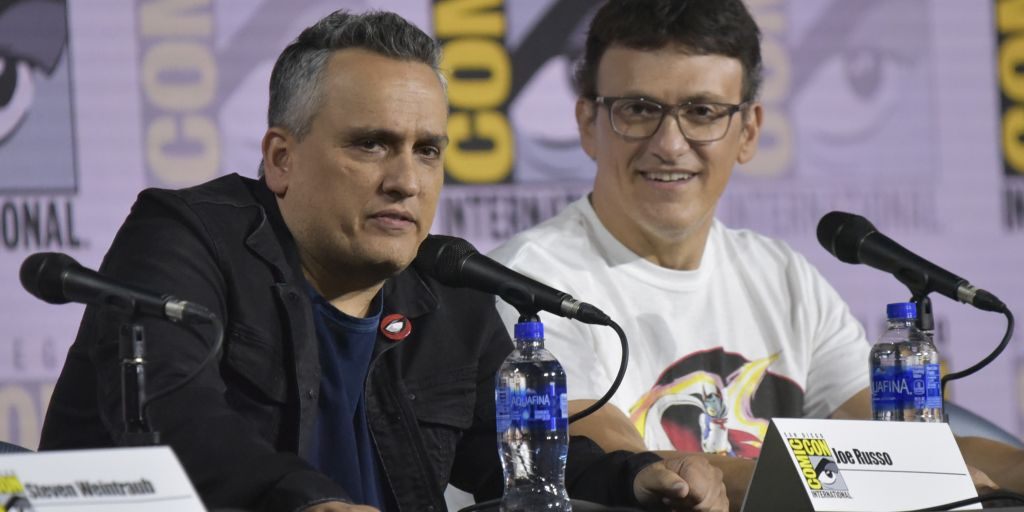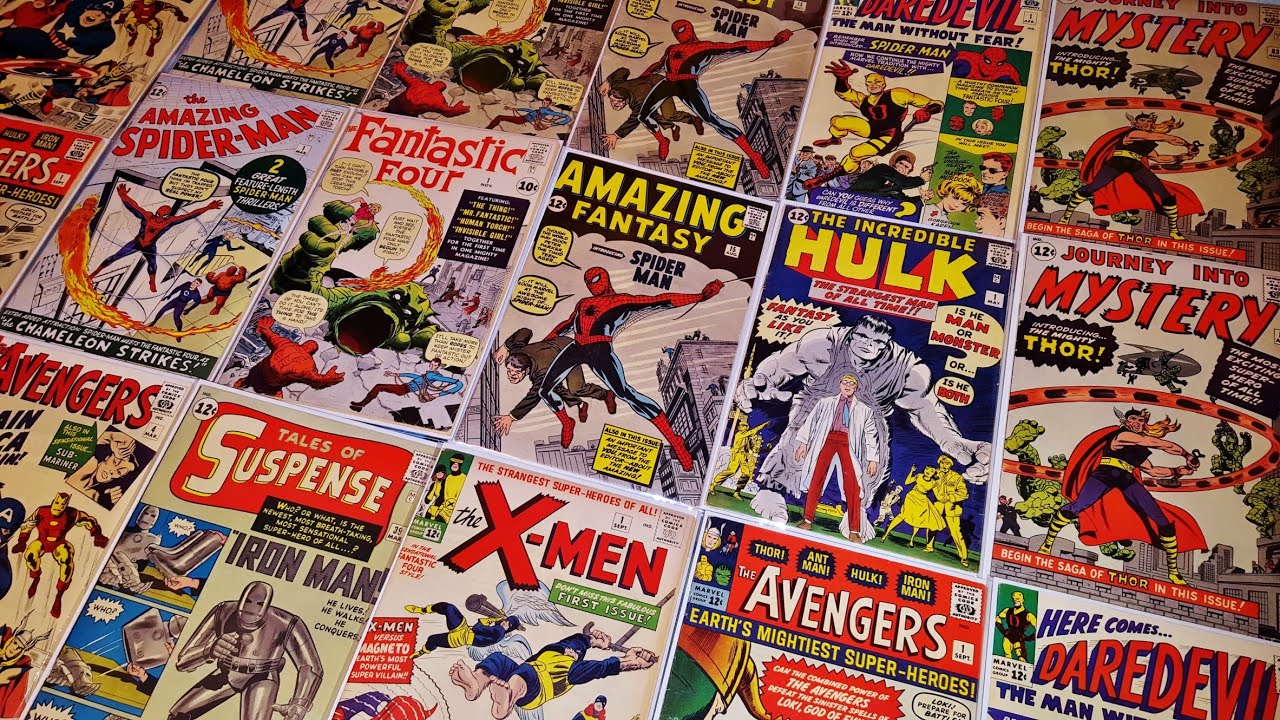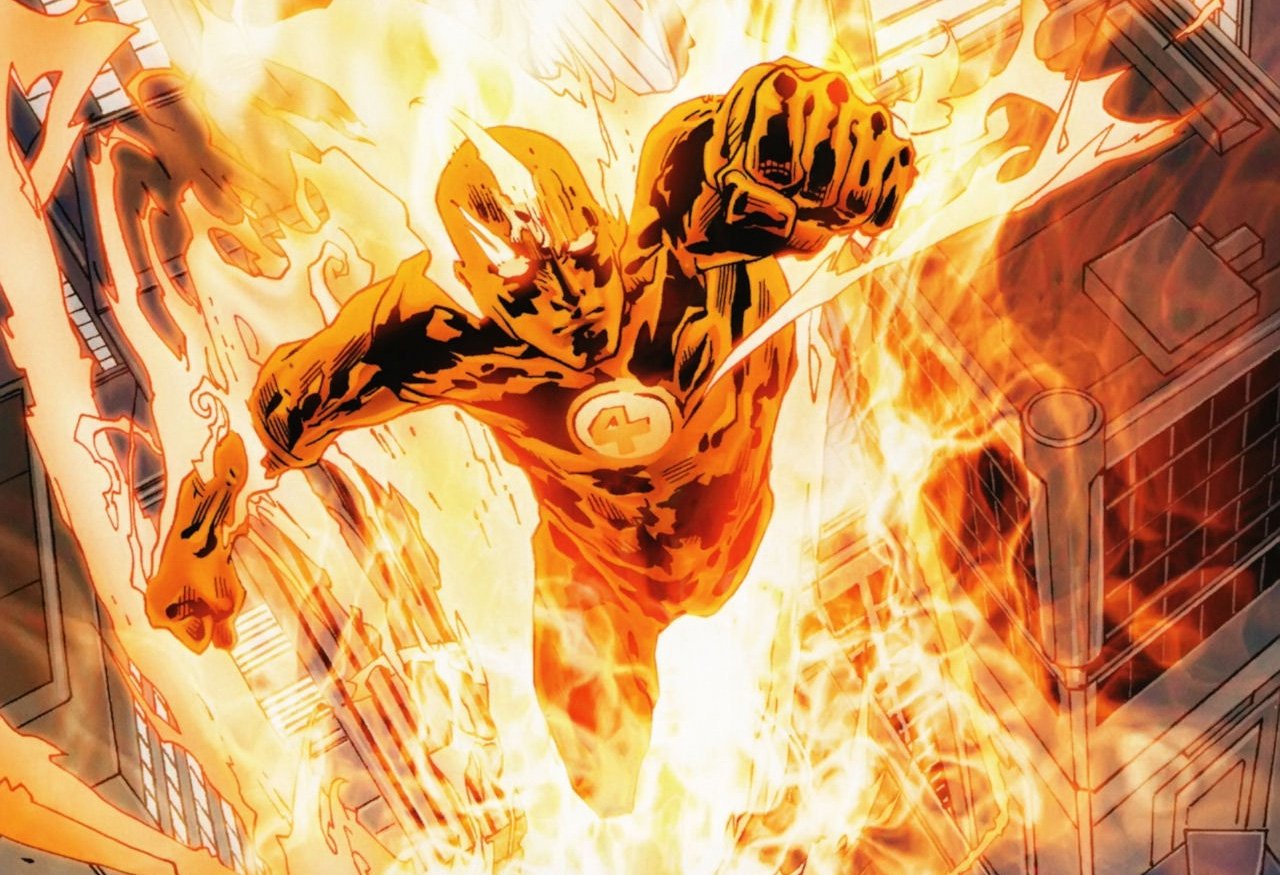
Marvel is proving that things didn’t end with the “Avengers: Endgame.” In fact, Phase 4 is setting a whole new standard in the Marvel Cinematic Universe aka MCU.
Marvel’s push for more women and people of color in its immensely popular film franchise is extending to behind the camera as it launches its next round of films after the massive success of “Avengers: Endgame.” Of the five films the superhero studio announced at Comic-Con on Saturday, only one is set to be directed by a white man.
“It’s about fresh voices and new voices and great filmmakers who can continue to steer the (Marvel Cinematic Universe) into new places,” Marvel Studios president Kevin Feige said in an interview after the studio’s explosive Hall H panel. “And I am as proud of that lineup of directors as you saw today as any.”
In addition to a slew of women and people of color at the helm of the upcoming Marvel films, the weekend’s announcements promised more diversity on screen.
First up for release is the long-awaited solo film starring Scarlett Johansson as the Black Widow, the lethal assassin she has played for nearly a decade. The film is set for release in May 2020.
Johansson said the search for “Black Widow” director Cate Shortland wasn’t easy.
“It’s really interesting because when we were looking for a director, you start to see some of the systemic problems,” Johansson said. “Even looking for a female director who has had enough experience — who has had the opportunity to have the experience to sit at the helm of something huge like this, you know, choices are limited because of that. And it sucks.”
The actress added that she was proud to see the diversity on stage during Marvel’s Hall H panel.
“Looking out on that stage tonight, it was incredible. It was really moving, also just to see how incredibly diverse the universe is — and reflects what we see all around us. It’s incredible,” she said.
In terms of more diversity, “Black Widow” is just the beginning.
“The Eternals” will feature a cast full of actors of color, including Kumail Nanjiani, Brian Tyree Henry, and Salma Hayek. Simu Liu will become Marvel’s first big screen Asian American superhero when “Shang-Chi and the Legend of the Ten Rings” is released in February 2021. Natalie Portman will play a female Thor in the new “Thor: Love and Thunder,” which will also feature Tessa Thompson’s character, Valkyrie, as the MCU’s first LGBTQ superhero.
“First of all, as new King (of Asgard), she needs to find her queen, so that will be her first order of business. She has some ideas. Keep you posted,” Thompson said during the panel. Feige later confirmed the news in an interview with the website io9.
The studio is also reviving one of Marvel’s most iconic black characters, Blade (previously played by Wesley Snipes), with the help of Academy Award winner Mahershala Ali. Feige told media outlets that right after winning his second Academy Award for “Green Book” earlier this year, Ali set up a meeting.
“Within 10 minutes, he basically was like, ‘What’s happening with ‘Blade’? I want to do it.′ And we went, that’s what happening with ‘Blade.’ Let’s do it,” Feige said.
“Captain Marvel,” released in March, was the first of Marvel Studios film to be centered entirely on a female character. It earned $427 million domestically, and along with the DC Comics film “Wonder Woman” has created momentum for more films with female heroes leading the way.
“Marvel is really focused on having very strong female characters at the forefront of their stories,” said actress Rachel Weisz, who also stars in “Black Widow.” ″And I think that’s great. This film has got three. It’s Scarlett, Florence Pugh, myself. So I think yeah, they are doing wonderful work to represent women, people of color, and tell different kinds of stories.”
The sliver of Hollywood still on the outside of the Marvel’s cinematic empire was paying close attention to the news.
Actress, writer and director Lena Waithe tweeted Sunday: “Captain America is black. Thor is a woman. the new Blade got two Oscars. 007 is a black woman. And The Little Mermaid bout to have locs. (Expletive). Just. Got. Real.”
Russo Brothers Takes Avengers: Endgame Comic-Con Questions
“Avengers: Endgame” directors Joe and Anthony Russo are doing a victory lap at San Diego Comic-Con Friday.
The brothers reflected on their blockbuster being so close to matching “Avatar’s” all-time box office record and even fielded questions from some unlikely fans.
“Avengers” stars Robert Downey Jr., Chris Evans, Chris Hemsworth, Mark Ruffalo and Paul Rudd grilled their directors via video message on everything from who is the smartest Avenger to what Captain America did after completing his big task in “Endgame.”
“By the way has, anyone not seen ‘Endgame?’” Joe Russo asked, as the crowd of 8,000 laughed. “If not you should leave now.”
It was a mostly tongue-in-cheek question. Not only is Comic-Con home base for some of Marvel’s most enthusiastic fans, but there also aren’t many moviegoers who didn’t see “Avengers: Endgame” earlier this summer. The film has grossed $2.782 billion to date, just shy of “Avatar’s” record of $2.788 billion.
“Give yourself a round of applause,” Joe Russo said to the audience. “You made the Marvel Universe happen and we couldn’t be more grateful.”
The directors riffed about who needs the most takes on set (Anthony Mackie) and who gets it in “one shot” (Scarlett Johannsson), revealed that they had a monthslong conversation about the length of Captain Marvel’s hair, and the most emotional day on the set of “Endgame” (Robert Downey Jr.’s last day).
For fans, the highlight of the panel was when a few of the Avengers appeared on screen to ask their directors some questions, even if they evaded answering most. Ruffalo wanted to know if the Hulk is now the smartest and strongest Avenger. Evans asked what the next thing Captain American does after he gets his dance with Peggy.
“Perhaps he and Peggy tried to make a baby?” Anthony Russo responded.
“I think he went to the bathroom,” said Joe Ruso.
The Russos’ have had a good run with Marvel, having directed four films in the Marvel Cinematic Universe. They don’t have any official future plans with the comic giant, but they did say they would love to direct an adaptation of the Marvel comic “Secret Wars.”
The brothers are already on to their next projects as producers. One reunites them with “Spider-Man” star Tom Holland on a movie about the opioid crisis set in their hometown of Cleveland, Ohio. Another will see Michael B. Jordan star in “The Thomas Crown Affair.”
They also announced that they’ll be producing adaptations of the cult comic “Grimjack” and “Battle of the Planets” with their AGBO production banner.
But the big Marvel news is yet to come at the annual fan convention. Saturday evening, Marvel Studios President Kevin Feige will take the stage in Hall H where many expect him to announce plans for the next phase of Marvel films. Although details of what exactly will happen and who might appear at this point are being more closely guarded than one of the series’ infinity stones.
Marvel Comics MCU FAQ
What is now Marvel Comics was originally founded by Martin Goodman as Timely Comics. The first comic published by Timely, Marvel Comics #1, would later serve as the inspiration for the company’s current name. Timely Comics starred several characters, many now forgotten, and a few that have stood the test of time, such as the Sub-Mariner, Captain America, Bucky, and the original Human Torch. Timely folded in 1950 and was picked up by Atlas Comics, which attempted to bring back some of the company’s big super-hero names. Atlas, however, was not long for this world and closed in 1957.
In 1961 Marvel Comics launched with Fantastic Four #1, the brainchild of Stan Lee, marking the beginning of the Marvel Universe. After Fantastic Four, the team at Marvel began rolling out various new titles featuring original characters such as Spider-Man and the X-Men, as well as characters revived from the old Timely days. This laid the foundation for what would become the Marvel Universe and marked the birth of a cultural icon.
While there is ongoing debate over industry-wide standards for marking the start and end dates of these periods, the generally accepted markers for Marvel Comics are as follows:
The Golden Age – Marvel Comics #1 (Oct. 1939)
The Golden Age marked the early development of the super-hero genre with characters such as Captain America, Namor The Sub-Mariner, and others.
The Silver Age – Fantastic Four #1 (Nov. 1961)
The Silver Age saw an emphasis on character development and realism in characterization. In addition, Marvel strove to appeal to a more mature audience through the incorporation of more sophisticated content and themes as well as addressing myriad social issues. This period saw the premiere of many of Marvel’s most recognized characters, such as Spider-Man, The Avengers, The X-Men, and many more.
The Bronze Age – Amazing Spider-Man #122 (Jul. 1973)
Darker and grittier in both style and content, the Bronze Age approached topics that had previously been considered taboo, such as drug use and alcoholism. Building on the foundation established in the Silver Age, Marvel’s comics began to further explore socially and politically significant issues.
The Modern Age – Secret Wars #1-12 (May 1984)
Continuing to the present day, the Modern Age of comics has been largely defined by a focus on industry trends and marketing gimmicks. This includes the rise of promotional events and crossovers and the heavy saturation of titles for popular characters such as Spider-Man and the X-Men. The rise of direct-market sales and independent comic publishers also played an important role in the development of the modern comics industry.
The mainstream Marvel Universe employs a sliding time scale that controls the passage of time within Earth-616 in relation to the passage of time in the real world. The result of this is that characters age little over the years while the world they inhabit adapts in real time to reflect our own. The purpose of this is to maintain the status quo of a character over time rather than having them grow old. This process has progressed over the years, with the first several years of Marvel continuity moving more or less in real time followed by increasing deceleration beginning around 1970.
A Story Arc is a story that spans more than one issue of a comic. A Crossover is a story arc that spans more than one issue through two or more titles. An Event is a broad story arc that is composed of multiple smaller arcs and crossovers, often with ramifications for the Marvel Universe as a whole.
Continuity is the practice of maintaining the details of a character’s history and characteristics over time. With multiple writers and artists working on a character or title through the years, carefully maintaining continuity is essential to ensuring the integrity of a character’s story. Retroactive Continuity (RetCon) is the practice of updating, adjusting, or altering the details of a character’s history for creative or practical reasons. This can range from the introduction of a never before mentioned sibling to the erasure of huge portions of a character’s history.
Over the years Marvel has used various alternative publishing brands, known as Imprints, designed to reach different niche and regional markets. Some examples include Curtis Magazines, Epic, Marvel Knights, and MAX, which were designed for mature audiences, Marvel UK, which was created to tap into the British market, or Tsunami, which was aimed at Manga readers. Whether or not a title is considered in continuity varies by title rather than Imprint.
Pioneered by Stan Lee and artists Jack Kirby and Steve Ditko, the Marvel Method is an alternative style of collaboration between the writer and artist in the creation of a comic book. Rather than write a panel-by-panel outline for the artist to follow, Lee would produce a one or two-sentence synopsis of the story. The artist would then fill in all the details and action on his own, with Lee adding dialogue and narration to the finished art. This method gave the artist more creative control over the characters and was an essential component in the development of Marvel Comics’ identity at the time.
Earth-616 is the designation for the Mainstream Marvel Universe within the broader Multiverse. The concept of the Marvel Universe grew out of Stan Lee’s desire that his various characters inhabit the same fictional world. Within this world, which was intended to mirror our own, these heroes and villains would freely interact and the actions of one could have a significant impact on the lives and world of the others. Over time, through the maintenance of continuity and the input of hundreds of writers and artists, this mythology has grown to incorporate thousands of diverse characters and concepts.
Earth-616 is one of many universes that combine to make up the Marvel Multiverse. These various universes are comprised of alternate realities, dimensions, and time-lines that feature their own versions of many of the characters that are part of Earth-616. While some of these universes are standalone concepts, many of them interact to varying degrees with each other and Earth-616. As such, it is not unusual for a character from an alternate universe to appear in Earth-616, or for an Earth-616 character to spend time in an alternate universe. Nearly all of these universes will have a designation that is “Earth” followed by a set of numbers.
While many believe that Stan Lee was the creator, he actually worked for Martin Goodman, who launched Marvel Comics. Marvel began in 1939 as Timely Comics but became known as Atlas Comics in the early 1950s. The Marvel era began in 1961, the same year the company launched The Fantastic Four along with other superhero titles created by Steve Ditko, Stan Lee, Jack Kirby and others.
The Human Torch is the most agreed upon answer. The Human Torch (aka Jim Hammond) first appeared in Marvel Comics #1 in 1939. The publisher was named Timely, which is the company that eventually became Marvel comics.
This is not the more famous Human Torch from the Fantastic Four, though that character was inspired by this one.
Jim Hammond is an Android, created by the scientist Phineas Horton. He has had a long, and varied history as a character over the years.
In World War II he fought alongside Captain America and The Sub Mariner as a member of The Invaders.
For a while it was thought that the Avenger The Vision, also an android, was, in fact, the body of the Human Torch, revamped by Ultron. This was somewhat undone in a later story.
The character has hung around to present day and has been in numerous teams and even had his own series within the past decade.




